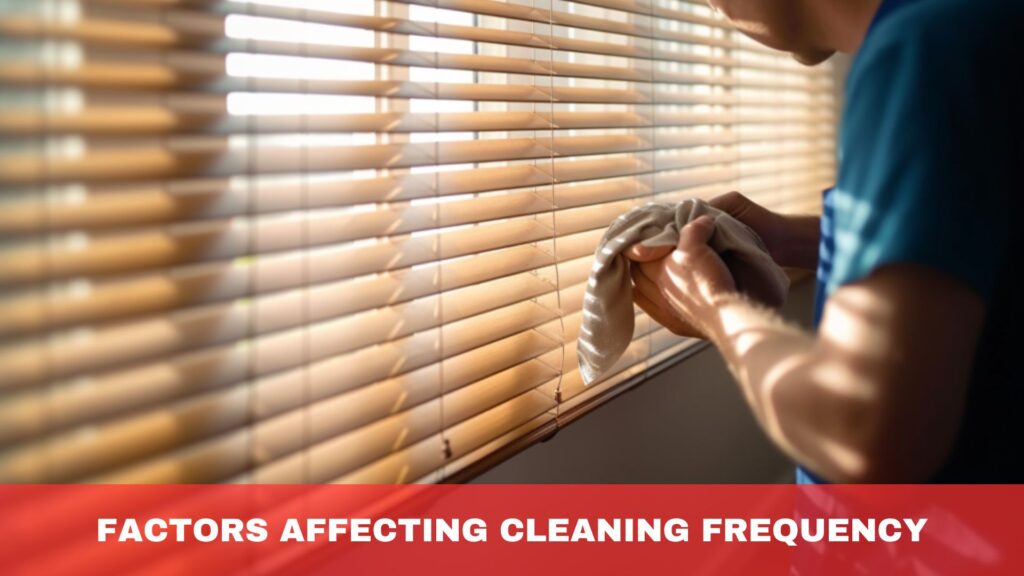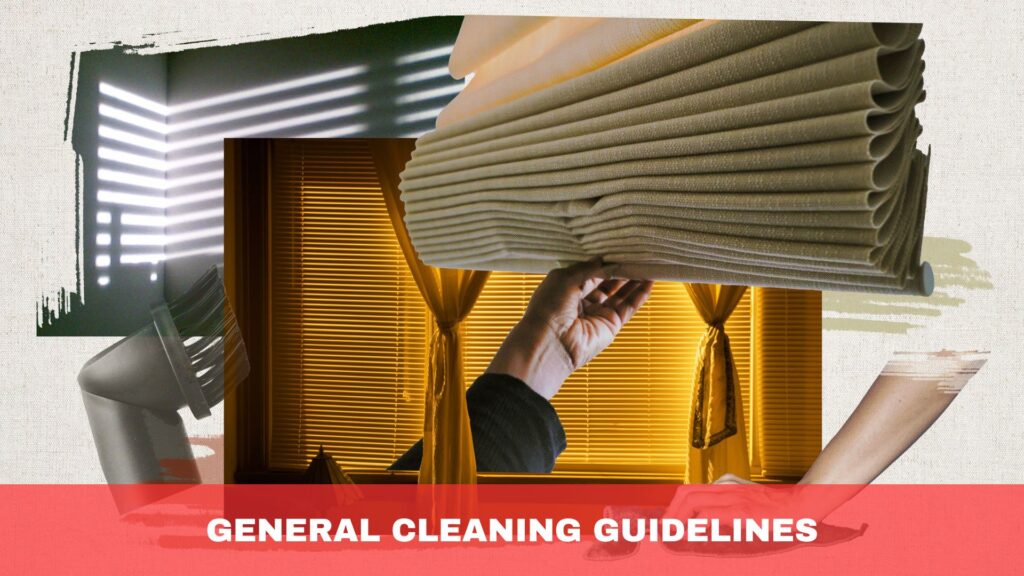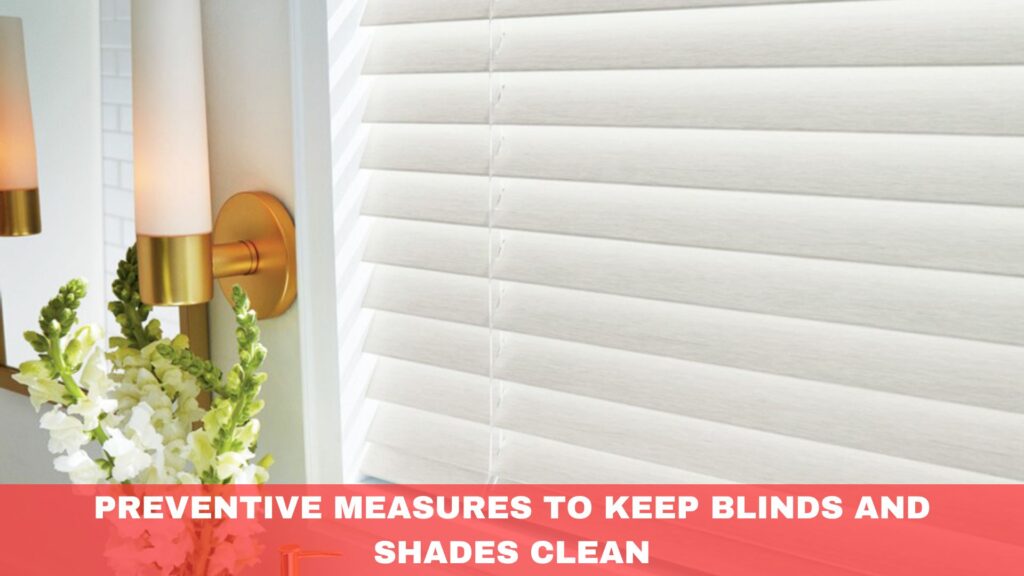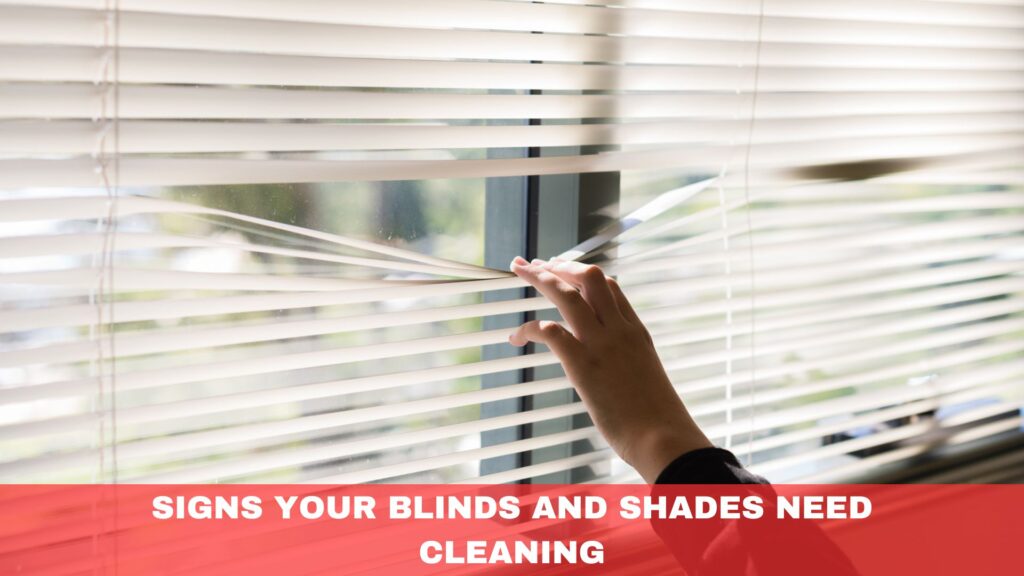Keeping blinds and shades clean can be challenging and time-consuming.
Dust and grime diminish surfaces’ appearance and affect indoor air quality and functionality. Ignoring regular maintenance leads to stubborn stains and damage, making cleaning even harder.
Discover the ideal cleaning schedule to keep your blinds and shades in pristine condition effortlessly. Regular upkeep will enhance their longevity and beauty, ensuring they always look their best.
How Often Should I Clean My Blinds and Shades to Keep Them Looking Their Best?
Clean your blinds and shades every two weeks to keep them looking their best. Regular dusting can prevent the build-up of grime and allergens. Consider washing or vacuuming them every few months for deeper cleaning, depending on the material and usage.
Factors Affecting Cleaning Frequency

Understanding the factors influencing how often you should clean your blinds and shades can help maintain their appearance and functionality.
Below are some of the factors affecting cleaning frequency;
- Location of Blinds: Blinds and shades in high-traffic areas or near frequently opened windows will accumulate dust and dirt more quickly. Kitchens and bathrooms are particularly prone to grime and moisture build-up, necessitating more frequent cleaning.
- Type of Blinds and Shades: Different materials require different care. Fabric shades can attract more dust and may need regular vacuuming, while wooden blinds might need occasional polishing to maintain their finish. Aluminium and vinyl blinds are more easily wiped down and may require less frequent cleaning.
- Presence of Allergens: Homes with pets or individuals with allergies will benefit from more frequent cleaning. Pet hair, dander, and other allergens can settle on blinds and shades, exacerbating allergy symptoms.
- Exposure to Environmental Factors: Blinds and shades in areas with high pollution or pollen levels will require more frequent attention. Seasonal changes can also impact how often you need to clean, with spring and autumn being peak times for dust and pollen.
- Usage: Blinds that are adjusted often will attract more dust and require regular cleaning to ensure smooth operation.
General Cleaning Guidelines

Proper cleaning can extend the life of your blinds and shades. Below are essential guidelines to keep them looking their best:
- Dust Regularly: Use a microfiber cloth or a feather duster to remove dust from blinds and shades every two weeks. For vertical blinds, start at the top and work your way down. For horizontal blinds, work from side to side.
- Vacuum with a Brush Attachment: Use a vacuum cleaner with a brush attachment for fabric shades and delicate materials. Gently vacuum each slat or panel to remove dust and dirt without damaging the fabric.
- Spot Clean Stains: Use a damp cloth with mild detergent for minor stains. To prevent water damage, avoid soaking the fabric or slats. Blot the area gently and let it air dry.
- Deep Clean Periodically: Take down the blinds or shades every few months for a more thorough cleaning. Wash metal and vinyl blinds with warm, soapy water, rinse, and dry them thoroughly before rehanging. Consider professional cleaning services for fabric shades if they are heavily soiled or delicate.
- Avoid Harsh Chemicals: Use mild, non-abrasive cleaners to prevent material damage. Harsh chemicals can strip finishes and weaken fabrics.
Cleaning Methods for Different Types of Blinds and Shades

Different blinds and shades require specific cleaning methods to maintain appearance and longevity. For wooden blinds, dust regularly with a soft, dry cloth or a vacuum with a brush attachment.
Avoid water and harsh chemicals, as these can damage the wood. Use a slightly damp cloth with a mild wood cleaner for deeper cleaning, ensuring it dries immediately.
Aluminium and vinyl blinds are more durable and can be cleaned with a damp cloth and mild detergent. For stubborn dirt, remove the blinds and soak them in a tub of warm soapy water. Rinse and dry thoroughly before rehanging to prevent rust or mould.
For fabric shades, vacuum them using a brush attachment to remove dust. For spot cleaning, use a mild detergent and a damp cloth, being careful not to saturate the fabric. Delicate or heavily soiled fabric shades may require professional cleaning to avoid damage.
Honeycomb shades can be vacuumed with a brush attachment to remove dust from the cells. For spot cleaning, use a mild detergent and a damp cloth. Avoid excessive moisture to prevent damage to the cells and adhesives.
Vertical blinds should be dusted regularly with a microfiber cloth. For deeper cleaning, use a damp cloth with mild detergent. If the slats are removable, they can be soaked in soapy water, rinsed, and dried before rehanging.
Preventive Measures to Keep Blinds and Shades Clean

Preventive measures can significantly reduce the frequency and effort required to clean your blinds and shades. One effective strategy is to dust regularly.
By incorporating a quick dusting into your weekly cleaning routine, you can prevent the build-up of dirt and grime. Air purifiers and humidifiers can also help reduce dust accumulation, especially in homes with pets or high traffic.
Close windows and doors during windy conditions to minimise the amount of dust and pollen entering your home. Additionally, consider using window treatments, such as curtains or sheers, as a barrier against dust and dirt.
When cooking, use the exhaust fan to reduce grease and moisture that can settle on nearby blinds and shades.
Applying a fabric protectant to blinds and shades can repel dust and stains, making them easier to clean. Also, regularly check and clean the window sills and frames to prevent dirt from transferring to the blinds.
Finally, consider placing furniture away from direct contact with blinds and shades, reducing the risk of stains and physical damage. By implementing these preventive measures, you can maintain the cleanliness and appearance of your blinds and shades with minimal effort.
Signs Your Blinds and Shades Need Cleaning

Recognising the signs that your blinds and shades need cleaning is crucial for maintaining their appearance and functionality.
One of the most apparent indicators is visible dust and dirt accumulation. If you notice a layer of dust or see dirt on the slats or fabric, it’s time to clean them.
The discolouration is another sign; blinds and shades that appear dull or yellowed may harbour grime or pollutants. Pay attention to stains and spots, especially on fabric shades. These can result from spills, cooking grease, or contact with dirty hands.
Allergy symptoms such as sneezing, itchy eyes, or respiratory issues can indicate that your blinds and shades harbour allergens like dust, pet dander, or pollen. If these symptoms worsen when you are near the windows, a thorough cleaning is needed.
Operational issues can also signal the need for cleaning. Dirt and debris may interfere with the mechanisms of blinds that don’t open or close smoothly or have difficulty adjusting.
Lastly, if you notice an unpleasant odour coming from the blinds or shades, it’s likely due to accumulated dust and other particles that need to be cleaned away. Regular maintenance can help prevent these issues and keep your blinds and shades in top condition.
Tips for Easy Maintenance

Maintaining your blinds and shades doesn’t have to be daunting if you follow some simple tips. Regular dusting is vital. Use a microfiber cloth or a feather duster to gently remove dust from the surface weekly. This prevents dust from building up and becoming more challenging to clean.
Vacuuming with a brush attachment is an effective way to keep fabric shades clean. This method is gentle enough to avoid damage while removing dust and dirt from the fabric. For deeper cleaning, spot cleaning with a mild detergent and water can address stains and spots without soaking the material.
Rotate your blinds regularly to ensure even exposure to sunlight, which can help prevent discolouration. For areas prone to grease and moisture, like kitchens, wipe down your blinds more frequently to avoid the build-up of stubborn grime.
Using protective sprays can make maintenance easier for fabric shades. These sprays repel dust and stains, making routine cleaning more effective.
Lastly, inspect your blinds and shades periodically for any signs of wear and tear. Addressing minor issues promptly can prevent them from becoming more significant problems.
Conclusion
In conclusion, regular cleaning and maintenance of your blinds and shades are essential for longevity and appearance. Assess their condition, follow our cleaning guidelines, and take preventive measures.
Start a cleaning routine today to keep your blinds and shades looking their best. Explore our other articles for more tips and detailed advice!


